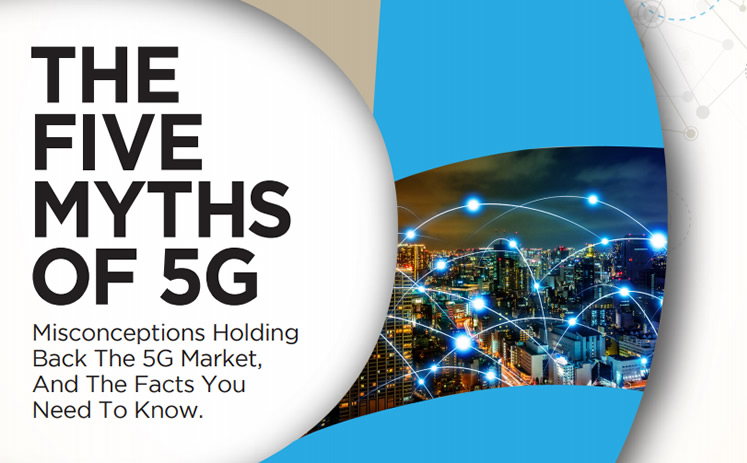Michelle Donegan is a tech writer who has covered the communications industry for more than 25 years on both sides of the pond. Having worked for various industry titles, including Communications Week International, Total Telecom and Light Reading, she specializes in mobile network technology trends.

If mobile operators really want to capitalize on 5G business opportunities, they are going to have to change their ways and abandon some common misconceptions about the technology. That’s the key message from a recent ABI Research white paper, “The 5 Myths of 5G.”
The paper notes that early 5G deployments are focused on consumer applications in the enhanced mobile broadband (eMBB) and fixed wireless access use cases, which extend the capacity and performance of existing 4G networks with higher bandwidth and lower latency. But these services are nowhere near the high-level vision for 5G set out by the ITU’s IMT-2020 recommendations, and the industry is “struggling to translate this vision into real commercial opportunities,” according to the paper.
Useful read: What is 5G Fixed Wireless Access?
To provide a reality check and some direction for mobile operators, ABI’s paper busts some myths about 5G and explains how certain business models will need to fundamentally change.
First, 5G is not just about bandwidth and latency. Operators should focus on what business processes 5G can support, rather than limiting the technology to simply a connectivity solution.
A related myth is that consumer services will be enough to justify 5G rollouts. Research from ABI has found that it could take mobile operators 15 years to achieve a return on investment (ROI) if they only relied on consumer services. Serving industry verticals is expected to be a bigger opportunity for operators, but current implementations are not designed for enterprises. ABI recommends that operators avoid a “Swiss Army knife” approach to building 5G networks that they think could accommodate consumers and enterprises alike. Enterprise sectors will require a different network approach.
Also, 5G is not going to be the only technology suitable for industry verticals. As 5G is now often referred to as a “network of networks,” this has resulted in the misconception that 5G will be the only access technology that enterprises will need. ABI says that 5G will be only one part of enterprise solutions, and it could be “larger than connectivity only if the telco value chain builds expertise for each vertical separately.”
The other misconceptions about 5G are that the technology supply chain (which delivered 2G, 3G and 4G) will continue to be controlled by established vendors and that standardization efforts can extend into addressing vertical use cases. ABI points out that enterprise vertical use cases will need more engagement with a wider variety of suppliers, especially third party B2B application developers. The research firm also says that standards bodies and regulatory organizations need to “go back to the drawing board and redesign appropriate strategies for industry verticals, rather than relying on progressive extensions to legacy standards.”
In short, that’s a lot of change required – from network design to the supply chain to standards creation – to achieve the ultimate vision for 5G.
ABI's white paper can be downloaded here
50% off Lyca Mobile’s Pay As You Go plans
Lyca Mobile’s cheap Pay As You Go deals include roaming and international minutes.









